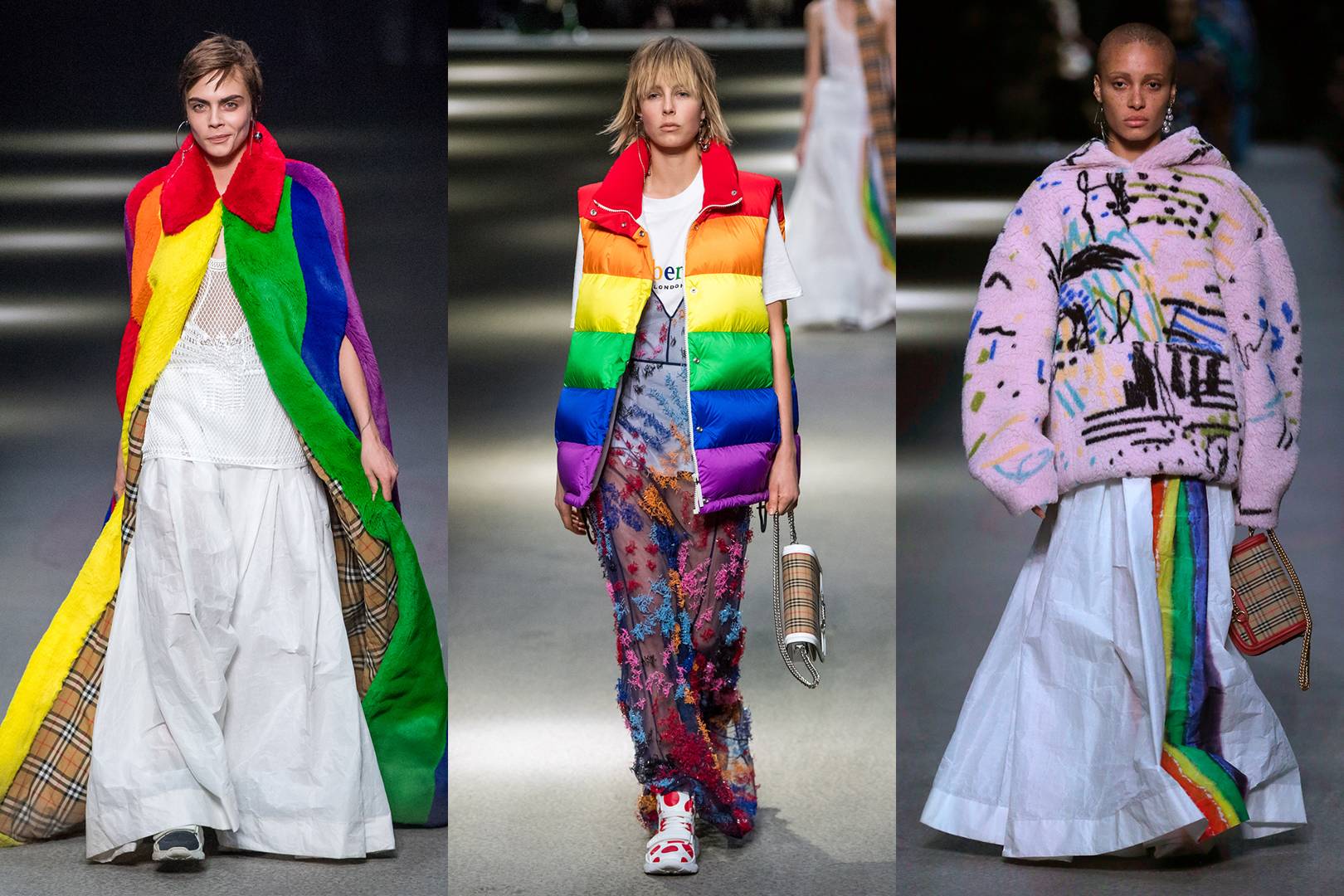The fashion industry has spawned some of the most iconic and infuential gaydesigners, but does it still have a problem with LGBTQ+ discrimination? Tasha Johnson investigates.
Homosexuality and fashion have always somehow been seen as linked, with the ever-prevalent stereotype: ‘Of course he’s gay, look how well dressed he is.’ Furthermore, some of the most famous fashion designers have been gay men, who have often included statements of queer pride on the runway, such as Christopher Bailey’s final show for Burberry in 2018. But does the industry actually respect the talents of gay men, or are they just used as pawns to profit off, in much the same way that some designers appropriate black culture in order to present ‘original’ material? This question is near impossible to answer, since individuals cannot be said to represent a whole community, but the way in which some gay models have been treated in the industry demonstrates that there are still deep-rooted issues to be addressed.
In 2015, John Tuite and Carlos Santolalla became the first openly gay couple to be signed to a major agency as a pair, but when speaking about his experience with Dazed magazine that same year, Tuite expressed that “my very first experience with modelling was homophobic… The guy that scouted me online immediately told me his agency wouldn’t sign me because they ‘don’t work with gay men.’” Santolalla shared this sentiment, adding, “In NYC it’s pretty common practice for your agent to tell you before signing to not be ‘gay’ and to ‘act like a man’ as if being gay demeans your manhood.” Similarly, in an interview with i-D magazine, model Marc Sebastian Faiella said his first agents told him to “always carry around my skateboard, never wash my hair, and constantly talk about girls so I would appear ‘masculine and bad boy-ish.’”
So why are the standards different for models than they are for designers? It’s hard to imagine an uproar about a gay designer wearing a dress or acting ‘feminine’. Geoffrey Macnab summed it up best in his 2013 piece for The Independent, while discussing the topic of gay Hollywood: “The real issue here, of course, is economics… [Only] gay and lesbian directors, producers, studio heads and supporting actors can be open about their sexuality as long as it doesn’t get in the way of the work.” This same logic applies to designers – they aren’t the ones whose personal lives and social medias must reflect their own personal brands – or at least not to the same extent as models. If you passed a famous designer on the street, chances are you’d walk straight by. You know the name, but not the face, but often the reverse is true with models.
Though these examples are not the most recent, it appears that in an industry where the most prominent individuals gained recognition decades ago – Valentino was established in 1960, and Versace in 1978 – progress is not being made at the rapid rate one would assume.
Furthermore, facing perhaps the biggest challenge out of all the LGBTQ+ community in the fashion industry is the trans community, who face an inordinate amount of discrimination in all industries and
on a daily basis. Nowhere was this attitude clearer than in the recent controversy over the Victoria’s Secret Fashion Show. The brand has been accused of refusing to cast transgender and plus-size models, with Chief Marketing Officer, Ed Razek commenting to Vogue that “we market who we sell to, and we don’t market to the whole world […] it’s like, why doesn’t your show do this? Shouldn’t you have transsexuals in the show? No. No, I don’t think we should. Well, why not? Because the show is a fantasy.” He has since made a lack-lustre apology for these remarks, though more likely trying to save face for the brand than issuing an authentic statement of support.
There have been notable improvements in the inclusion of transgender models on the catwalk in recent years, as figures such as Hari Nef, Andreja Pejić and Teddy Quinlivan are well on their way to supermodel status, walking for Louis Vuitton, Jean-Paul Gaultier and Jeremy Scott. Nef also became the first openly transgender woman to grace the cover of a major British fashion magazine in 2016, for ELLE’s September issue. Indeed, this last New York Fashion Week (SS19) saw Marco Marco make history by including only transgender models on his catwalk, among them YouTuber Gigi Gorgeous and actress Trace Lysette. Nevertheless, the industry still has major steps to take to normalise the use of transgender models as a significant proportion of their selection. Rather than using one or two famous faces to make a superficial statement of support, trans models should be hired in as many numbers as cisgender models, a practice that will hopefully trickle down from high fashion onto the high street to promote a positive message of inclusion and diversity.
So while the fashion industry has done a lot in the way of accepting and embracing the LGBTQ+ community there is undoubtedly more work to be done. Though potentially not the worst industry for LGBTQ+ discrimination, it still has a long way to go – after all, progress is never a bad thing.
By Tasha Johnson.
Image: Getty Images

